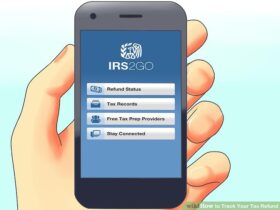Did you know that you might have money waiting for you from previous tax years? If you’ve missed filing a tax return for past years or didn’t claim a refund you were entitled to, the IRS may still owe you money. Here’s a detailed guide on how to claim tax refunds for prior years and ensure you get what you’re owed.
Understanding Tax Refunds for Prior Years
Tax refunds from previous years can arise from various situations:
- Missed Filings: You might have missed filing a tax return for one or more past years.
- Unclaimed Refunds: You filed your return but didn’t claim all the credits or deductions you were eligible for.
- Errors in Past Returns: Mistakes in past tax returns may have led to a lower refund than you were entitled to.
The IRS generally allows you to claim refunds for up to three years from the original filing deadline. After this period, any unclaimed refunds become the property of the U.S. Treasury.
How to Claim a Refund for Prior Years
Here’s how to go about claiming a refund for past tax years:
1. Determine Eligibility
- Review Past Returns: Check if you filed returns for the years in question. If you didn’t file, you may be eligible for a refund if you had income and paid taxes.
- Check Refund Status: If you filed but didn’t receive a refund or believe you were shorted, review your tax returns to confirm eligibility for additional refunds.
2. Gather Documentation
Collect all necessary documentation for the tax years you’re addressing:
- Income Statements: W-2s, 1099s, and other income records.
- Expense Records: Receipts and records for deductions or credits you plan to claim.
- Previous Tax Returns: Copies of past returns, if available.
3. File a Tax Return for Each Year
- Obtain Forms: Get the correct forms for each year from the IRS website. Use the forms applicable to the tax year you are filing for.
- Complete the Returns: Fill out the forms accurately, including all income, deductions, and credits. Ensure that you’re filing for the specific year in question.
- Submit the Returns: Mail the completed returns to the IRS. Be sure to use the addresses specified for each year’s forms.
4. Amend Past Returns
If you need to correct mistakes or omissions:
- Use Form 1040-X: File Form 1040-X, “Amended U.S. Individual Income Tax Return,” for the year you need to amend.
- Include Correct Information: Provide the corrected information and explain the changes from the original return.
- Mail the Form: Send the amended return to the address indicated in the Form 1040-X instructions.
5. Check the Status of Your Refund
- Online Tools: Use the IRS “Where’s My Refund?” tool to check the status of your refund for past years.
- Call the IRS: For detailed inquiries, contact the IRS at 1-800-829-1040. Have your personal information and details of your past returns ready.
6. Consult a Tax Professional
If you’re unsure about the process or need assistance:
- Seek Professional Help: A tax professional can guide filing or amending past returns and help ensure you maximize your refund.
Important Considerations
1. Filing Deadlines
You have up to three years from the original filing deadline to claim a refund. For example, if you’re claiming a refund for the 2020 tax year, you need to file by April 15, 2024. After this period, any refunds are generally forfeited.
2. Refunds and Penalties
- No Penalties for Refund Claims: You won’t face penalties for claiming a refund; however, any taxes owed for those years may accrue interest and penalties if not paid on time.
- Interest on Refunds: The IRS may pay interest on refunds, depending on the timing and circumstances.
3. Address Changes
Ensure your address is up-to-date with the IRS to receive any refunds. Refer to the IRS website or contact them directly if you need to update your address.





Leave a Reply